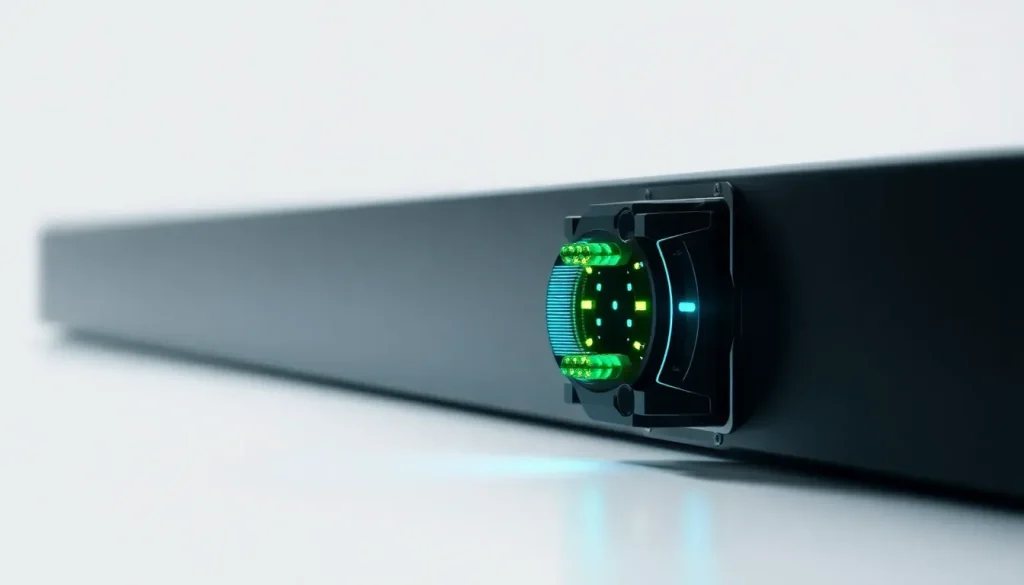Understanding 400G-SR8 Optics and Their Importance

In the ever-evolving world of networking technology, understanding the components that facilitate high-speed data transfer is essential. Among these components, the 400G-SR8 optics stand out as a crucial development, particularly for data centers requiring efficient and robust connectivity. This article dives deep into what 400G-SR8 optics are, their significance, and the nuances of their integration into modern networking environments.
- Understanding 400G-SR8 optics
- Cabling requirements for 400G-SR8 optics
- Examples of 400G-SR8 transceivers
- Identifying SR8 optics
- The electrical aspects of 400G-SR8 optics
- The significance of SR8 optics for modern networking
- Practical applications of 400G-SR8 optics
- Conclusion: Embracing the future of networking
Understanding 400G-SR8 optics
At its core, the term 400G-SR8 optics conveys a wealth of information about the capabilities and specifications of this networking technology. Let's break it down:
- 400G: This indicates that the device supports a data transfer rate of 400 gigabits per second (Gbps).
- SR: This denotes "short-range," meaning the optics are optimized for distances of up to 100 meters.
- 8: This refers to the eight communication channels utilized in the transmission process.
Essentially, this configuration allows for a total throughput of 400Gbps distributed across eight individual channels, with each channel providing 50Gbps. This design requires a specific cabling setup, which significantly impacts data center infrastructure.
Cabling requirements for 400G-SR8 optics
The cabling system plays a vital role in the efficient operation of 400G-SR8 optics. Each communication channel uses a paired send and receive fiber, leading to a total of 16 fibers—eight for sending data and eight for receiving it. Understanding these requirements is crucial for data centers looking to implement this technology.
Specifically, if a data center is using LC cabling or MPO-12 connectors, the transition to SR8 optics necessitates the adoption of MPO-16 APC cabling. This is a critical factor for ensuring seamless communication without bottlenecks.
Examples of 400G-SR8 transceivers
One notable example of a 400G-SR8 transceiver is the FS 400Gbase-SR8 400GbE QSFP-DD Optical Transceiver. This device, designed in the QSFP-DD form factor, illustrates the compact and efficient design of modern optical transceivers.
Additionally, the NVIDIA MMA4U00-WS-F is an OSFP 400G-SR8 optic that exemplifies the diversity of form factors available for this technology. Understanding these different designs is crucial, especially when considering the various applications and environments in which they will be deployed.
Identifying SR8 optics
Recognizing whether a transceiver is an SR8 optic can sometimes require familiarity with manufacturer naming conventions. For example, NVIDIA's naming scheme may not immediately indicate the SR8 specification. However, a quick inspection of the connectors can reveal the number of fibers used. In SR8 optics, there are typically 16 fibers present, which facilitate communication.
It is worth noting that while some designs may utilize 24-fiber cabling, the operational requirement remains at 16 fibers. This choice minimizes waste and optimizes resource usage in data centers.
The electrical aspects of 400G-SR8 optics
On the electrical side, SR8 modules often feature 56Gbps PAM4 (Pulse Amplitude Modulation) technology, which aligns with the 50G optical channels. While this might seem like a technical detail, it becomes increasingly significant as data speeds escalate. Proper mapping of electrical and optical channels is vital for ensuring reliable connectivity, especially in high-performance environments.
The significance of SR8 optics for modern networking
The introduction of 400G-SR8 optics is a game-changer in the landscape of data networking. With multiple form factors such as QSFP112, QSFP56-DD, and OSFP, the complexity of physically linking devices increases. Data center operators must navigate these various options while also managing the optical cabling intricacies that accompany them.
One of the key benefits of using SR8 optics is their cost-effectiveness. Since each lane operates at 50Gbps and utilizes individual fibers, the overall expenditure on optics can be significantly lower than with higher-capacity alternatives. While SR8 optics can reach distances of up to 100 meters, there are also very short-range (VSR8) variants that extend connectivity for distances of about 50 meters.
Practical applications of 400G-SR8 optics
As organizations increasingly transition to 400G networks, the practical applications of SR8 optics are becoming evident. Many data centers are standardizing on 400G-SR8 setups due to their reliability and efficiency, especially when connecting high-speed devices for testing and operational purposes. However, the choice of optics should align with the specific requirements of the data center's infrastructure and connectivity needs.
In testing scenarios, while SR8 optics are effective, you may discover that they are not the optimal solution for every situation. For example, organizations with diverse device testing requirements might benefit from exploring other configurations to ensure compatibility and performance.
For a deeper insight into the capabilities and applications of 400G optics, consider checking out this informative video:
Conclusion: Embracing the future of networking
As networking technologies continue to evolve, embracing innovations like 400G-SR8 optics is essential for maintaining competitive advantages in data transfer speed and efficiency. Understanding the underlying principles and practical implementations of these optics will empower data centers to make informed choices, ultimately leading to enhanced performance and cost-effectiveness in their operations.



Leave a Reply